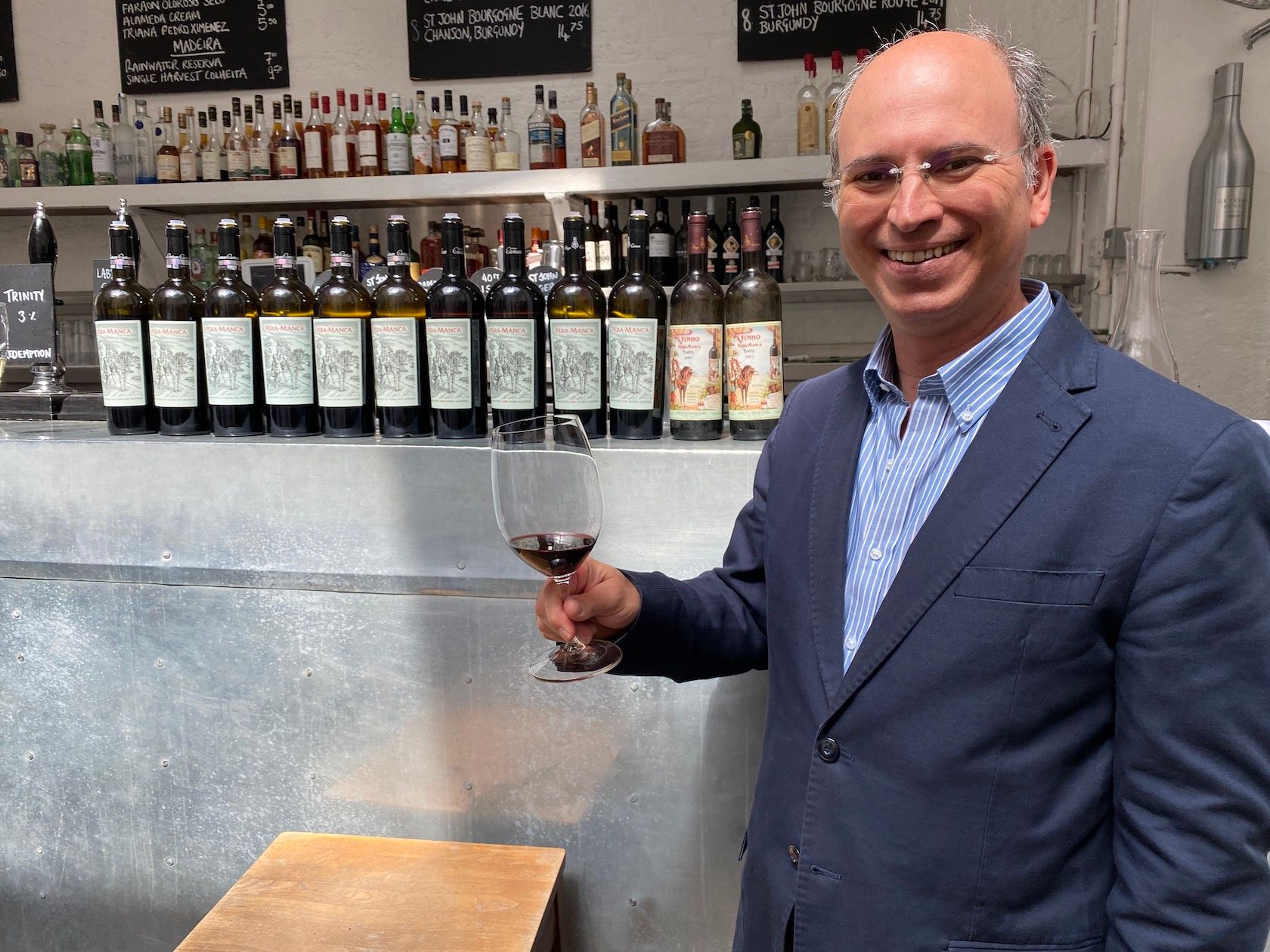“For a wine that is so full-bodied and bold, Pêra-Manca has surprising elegance and complexity, with the acidity of the Trincadeira and the region’s granitic soils bringing freshness and balance,” writes Dean.
To get a quick feel for the status of Cartuxa Pêra-Manca Tinto, arguably Portugal’s greatest still wine, you need look no further than last year’s first Vivino Community Awards. When ‘the world’s largest online wine market’ asked its 54 million users what the best wine in the world was, the top spot wasn’t taken by a Napa Cab, a Bordeaux First Growth, nor a DRC or Rousseau. No, the best wine in the world was judged to be the 2005 vintage of Pêra-Manca.
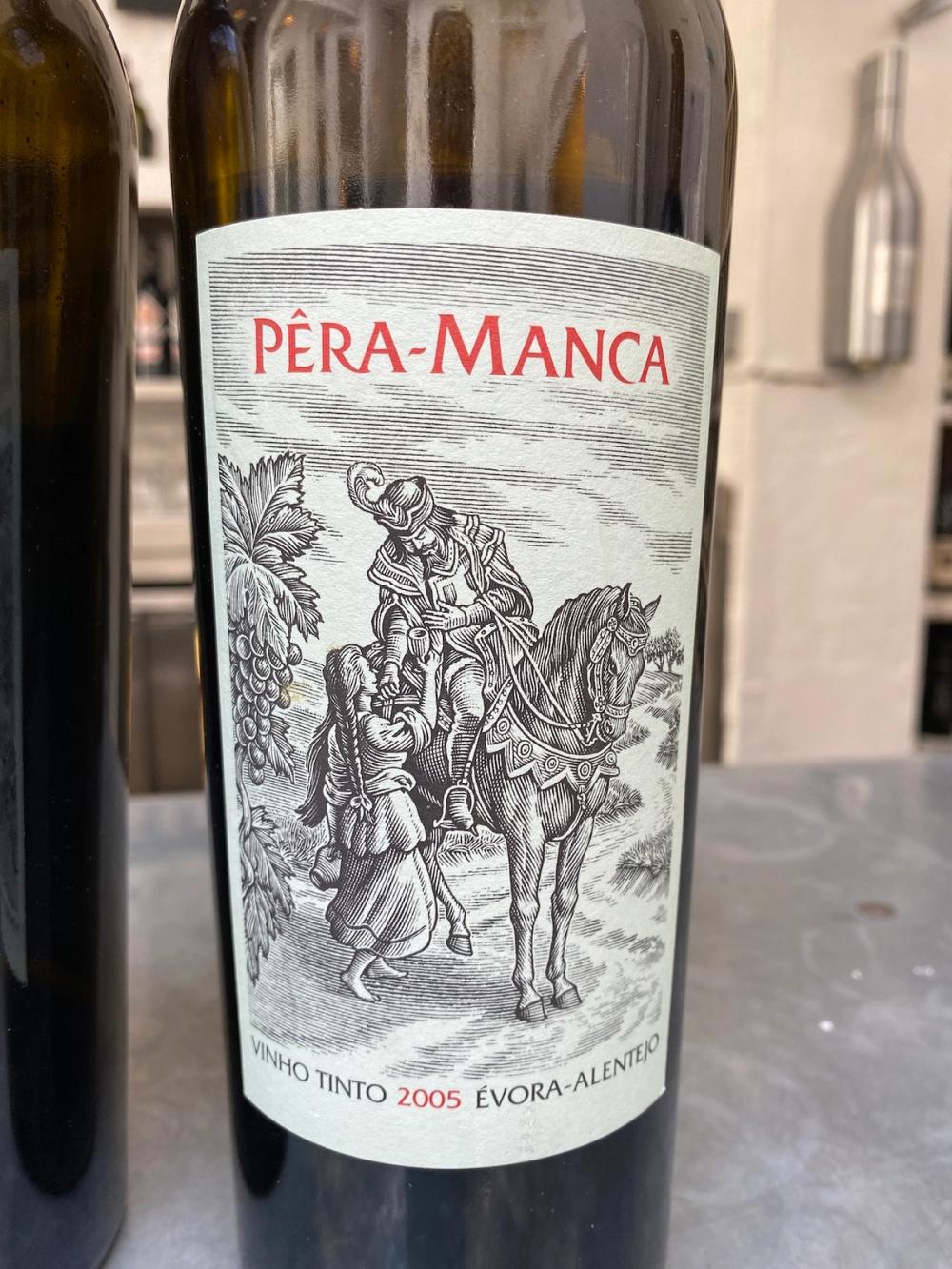
This vintage, along with five others of this most rare and expensive red (around £300 a bottle retail), formed a vertical tasting led by Cartuxa head winemaker Pedro Baptista, as a way of evaluating what makes this wine achieve greatness but also to mark Mentzendorff’s coup in securing sales and distribution in the UK, not only for the red and white version of the wine but a raft of other wines from Cartuxa.
Cartuxa is a fascinating winery located in the Évora region of the Alentejo. Vineyards were first planted in 1517 by the Jesuits and, since that time, the monastery and vineyards have changed hands from private to state ownership and back again. What makes the winery quite unique, though, is that the last private owner Vasco Maria Eugénio, who was childless, created a charitable foundation to which he bequeathed the estate (now operating across 1050 hectares) and all the winery’s trademarks so that all the profits from the winery go directly into supporting a university, hospital, social housing and other welfare institutions. The foundation which is 60 years old next year, still operates on a non-profit basis, and has been instrumental in keeping the community in this area blessed with social and cultural institutions.

The Cartuxa winery in Évora, Alentejo
Understanding how Pêra-Manca is made
It is fair to say that Pêra-Manca is a legendary wine. Although production of the wine had a 70 year sojourn between 1920 and 1990 when Cartuxa revived the label, the first historical mentions of Pêra-Manca wines can be traced back to the 15th Century; when Pedro Alvares Cabral discovered Brazil in 1500 he was carrying bottles of the stuff and, tasting its modern incarnations, it’s not surprising that it survived the voyage – this is an immensely strong and sturdy wine with powerful acidity and tannins that are built for the long haul. Even today Brazil (along with Angola) is one of the top export markets for the wine.
Soon after the Pêra-Manca brand was patented in the 1870s, the wine won a number of gold medals in Bordeaux but sadly, after phylloxera and the death of the vineyard owner production of the wine ceased until Cartuxa revived it.
Like all of Cartuxa’s wines, Pêra-Manca celebrates indigenous grape varieties, in this case just two – Aragonês and Trincadeira – whose proportions vary in the wine according to the climate of the growing season. The vineyards these grapes come from have to be over 30 years old and carry the best expressions of the varieties from the same genetic origin and, because selection depends on the slow, perfect ripening of the fruit, the wine is only ever made in the best vintages, normally three out of every decade.
When conditions are perfect, each parcel is separated, the grapes picked at maximum maturity, de-stalked, refreshed for 24 hours in large refrigerated crates, then put in tanks for 5-10 days to allow fermentation to start naturally, a long period of maceration follows (35-45 days) to allow the wine to mature gentle with the skins on, which is then followed by 18 months in 300-500 litre French oak barrels. Each plot is vinified separately, then blended and bottled and aged for two years in the basement of the monastery.
To understand Pêra-Manca you first have to understand these two grapes and how they complement one another in the blend. In a nutshell, Trincadeira brings freshness and acidity (particularly important in such a hot climate) while Aragonês, which many will know better as Tempranillo or Tinta Roriz, brings flavour and tannins.
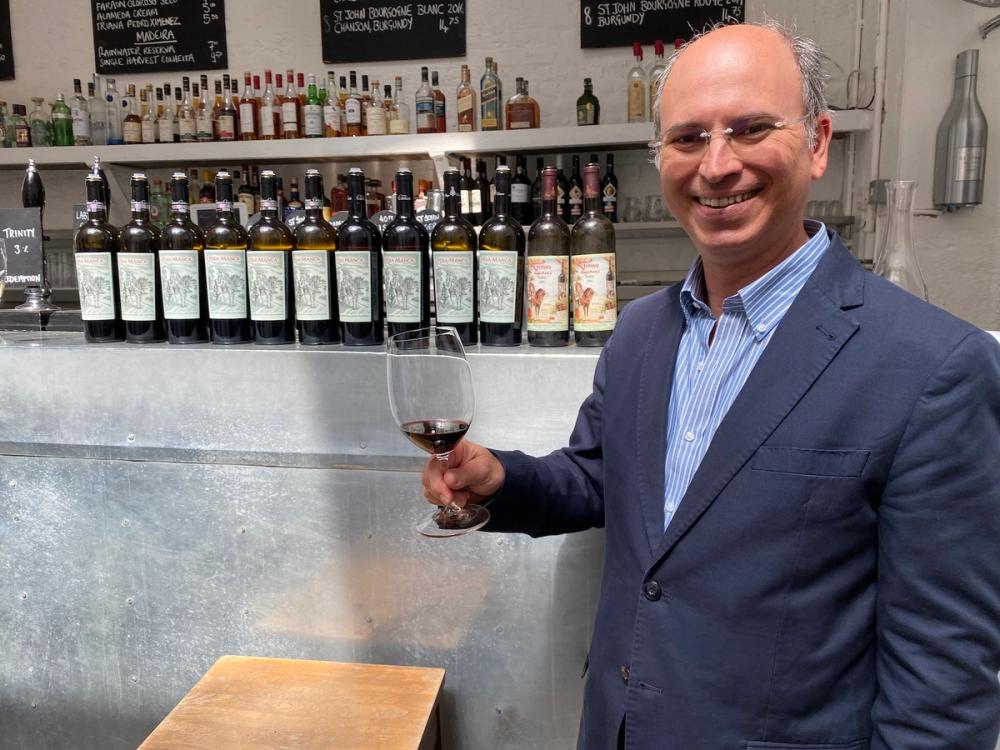
Cartuxa head winemaker, Pedro Baptista, St.JOHN, London, May, 2022
Cartuxa head winemaker Pedro Baptista explains that Trincadeira is not an easy grape variety to work with. It has prolific vegetation which has to be managed with careful canopy control. Aragonês, on the other hand, is extremely easy to work with although in very hot weather all the leaves can dry out in one week. The variety has a lower level of acidity than Trincadeira but, again, in hot weather the fruit can lose half of its acidity in a matter of a few days and its tannins become very hard and angular.
So, according to the vintage, the proportions of each wine are dialled up or down. In the six vintages we tasted the percentage of Trincadeira varied from 30% to 60%. And, just because a vintage might be very good in Alentejo, it does not follow that the conditions are right for making a Pêra-Manca. 2004, for example, was an excellent year in the region but the decision was made to pass on making the wine.
Baptista’s first Pêra-Manca where he was in total control of the winemaking was the 2005 vintage, although he did start blending the wine in 2003. He explains that there are three key decision-making stages. The first is at harvest time when he tastes the grapes and determines whether they are perfect or not. The second decision is at the end of fermentation if “you still feel what you felt when you tasted the grapes in the plots.” Either way it is at this point that the team decides on how the Trincadeira will be aged – whether it will be going into a Pêra-Manca or used in the estate’s other wines.
The third key moment is the moment just before bottling “and this decision must be a technical decision,” says Baptista. This criteria had to be used in 2015, the most recent vintage, because it was the first time that Cartuxa had made three successive vintages when normally it takes 10 years to find just three Pêra-Manca “we thought a lot about that on the third wine, the 2015,” Baptista says. Commercial strategy has to be kept out of the equation, therefore, and the decision is kept purely oenological.
In the same way that the vintage determines the nature of the blend, so also does it dictate the number of bottles produced. On average, Cartuxa produces 30-32,000 bottles of Pêra-Manca, although this can be as low as 10,000 or as high as 44,000 as it is with the 2015. The white version of Pêra-Manca is normally around 90,000 bottles with output more consistent due to the white varieties being easier to work with and having earlier maturation.
So what does Pêra-Manca taste like?

For a wine that is so full-bodied and bold, Pêra-Manca has surprising elegance and complexity, with the acidity of the Trincadeira and the region’s granitic soils bringing freshness and balance. In the mouth the wine has considerable presence but the tannins tend to be refined and a silky-smooth texture. Aromatics vary from year to year, of course, but expect to find dried fruits, orange peel, liquorice, tobacco, vanilla, oak and fruit notes which carry across to the palate which can include black berries, plum, confiture and milk chocolate. There’s balsamic, minerals and, with increased age, you can detect leather and dried rose petals.
For a wine that is always around 15% abv alcohol-wise, the wine doesn’t feel hot or jammy, but do expect the length to last a remarkable amount of time
Tasting the 6 vintages of Pêra-Manca
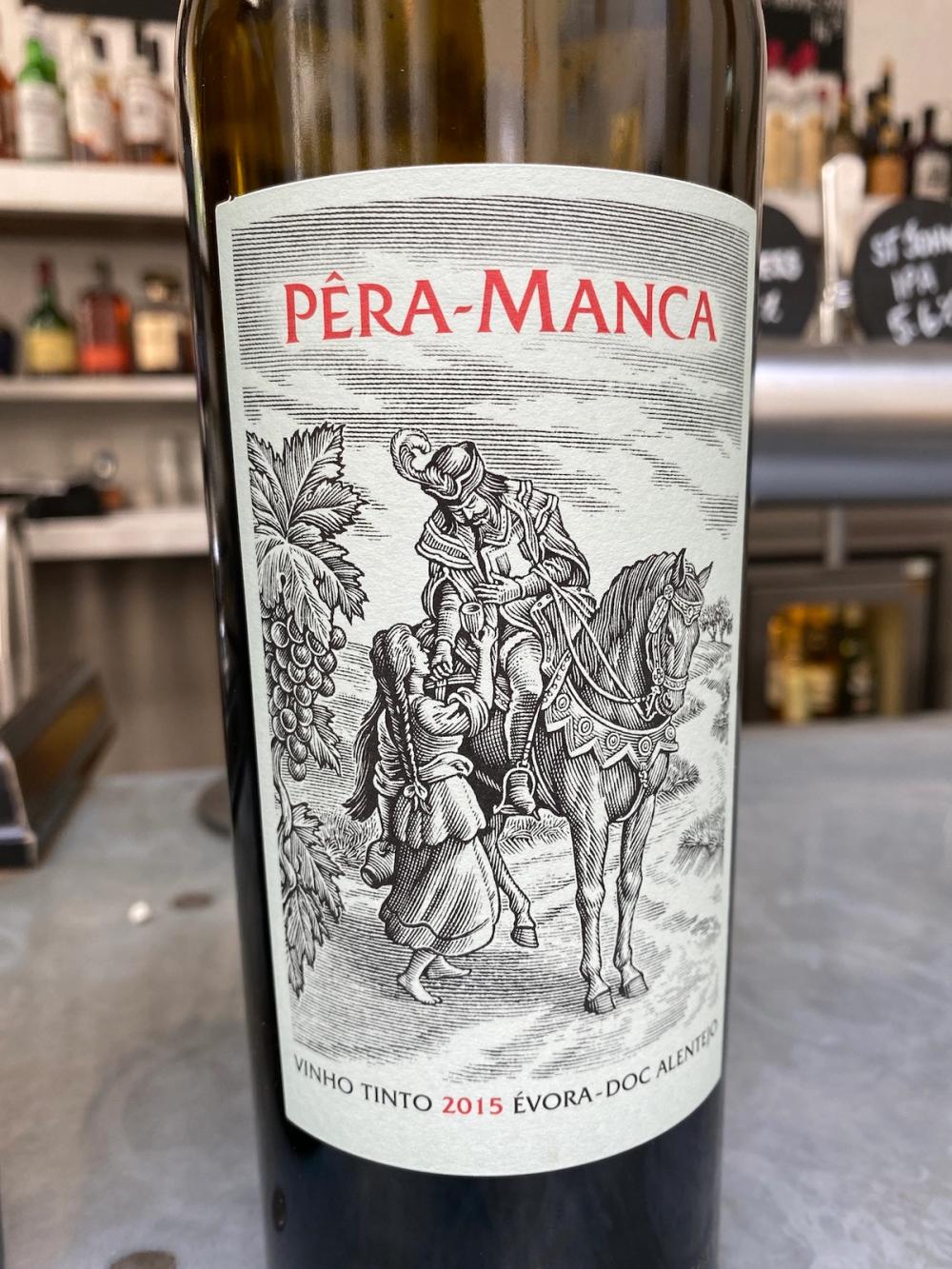
Pêra-Manca 2015
45% Trincadeira 55% Aragonês
Like 2003 this, the latest vintage of the wine, was a ‘soft’ vintage with temperatures around the ‘cooler’ 32-34°C mark, even so you can still really feel the power and structure of this wine (which is why the vertical tasting is from old to young).
Fresh and bright, lovely powdery-fine, ripe tannins, firm acidity with notes of blue plum skin on the palate, this is gastronomic and surprisingly drinkable now even though it has decades left ‘in the tank’.
Pêra-Manca 2013
60% Trincadeira 40% Aragonês
Although the tannins have much greater heft this wine is juicy and ripe in the mouth, fresh, young, clearly defined – almost chiseled. On the nose there’s lots of black cherries and blackberry with a slight herbal note.
Pêra-Manca 2011
45% Trincadeira 55% Aragonês
2011 had a cooler spring and summer than usual. Still full-bodied, with a firm structure and backbone of acidity, this vintage is much smoother than the previous two tasted, with the ripe tannins better integrated. There is a distinct liquorice note on the nose with blackberries, plum and milk chocolate. Lots of freshness and juice on the palate, minerals with black fruit and a massive, dry finish.
Pêra-Manca 2008
30% Trincadeira 70% Aragonês
If the finish was considerable with the 2011 here it is simply huge with a dry tannic kick at the end that’s quite a curve ball. Overall there are a lot of tannins here from the 70% Aragonês which, although ripe and well-integrated are ever-present. So complex, broody with a massive depth of flavour – liquorice, black fruit, tar and soy, great acidity and balance.
Pêra-Manca 2005
50% Trincadeira 50% Aragonês
2005 was the hottest, driest year with green harvesting essential. Even still this is the vintage which Vivino users rated the best wine in the world.
Overall the wine is more rounded and red (as opposed to black in profile and colour) and is drinking so well. There is a good degree of evolution here and the wine feels much more mature than the 2008. Ripe, red cherry notes, rose petals; in the mouth the wine is fresh, juicy, silky mouthfeel, soft tannins and plenty of complexity here. A long, dry finish. Quite outstanding.
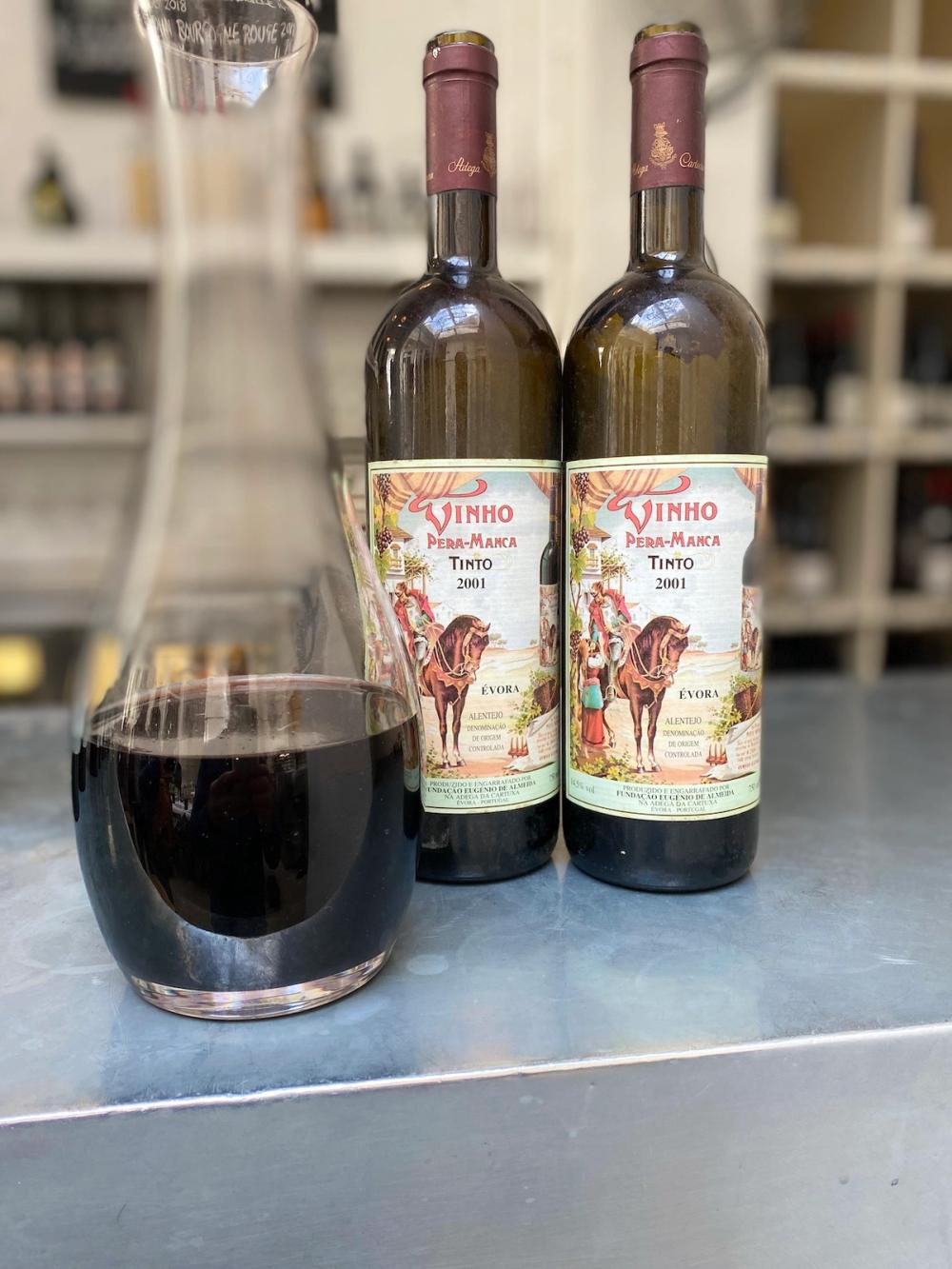
Pêra-Manca 2001
55% Trincadeira 45% Aragonês
Medium tawny in appearance, old wood aromatics, complex, macerated fruit, so complex. Ripe and smooth on entry, very soft tannins, savoury, almost meaty notes still quite structured with decent acidity, full bodied, fresh. Then ‘Whomph!’ – that characteristic, massive length, with a dry, paper note on the finish. Holding up brilliantly and could easily last a couple more decades. A real treat to taste this.
On the day the vintages in order of preference were: 2005, 2011, 2015, 2001, 2013, 2008.
There is also a white Pêra-Manca
Made from Antão Vaz grapes and wood fermented in first and second fill Burgundy barrels Pêra-Manca Baranco is kept on the lees for 12-14 months, then kept in bottle for a year before being released onto the market. This is a bold, complex, ‘grown-up’ white wine, that has oaky and buttery notes on the nose but is fresh, dry with wonderful fruit flavours in the mouth and takes you on a journey with citrus, melon, tropical fruits and minerals.
This has a multitude of uses and, like the Tinto, gets more magnificent with age. Unlike its red counterpart it is about a sixth of the price, clocking in around £50 retail, allowing for a by-the-glass option.
Pêra-Manca and the rest of the Cartuxa wines are imported and sold in the UK by Mentzendorff which is a supplier partner of The Buyer. To discover more about them click here.
